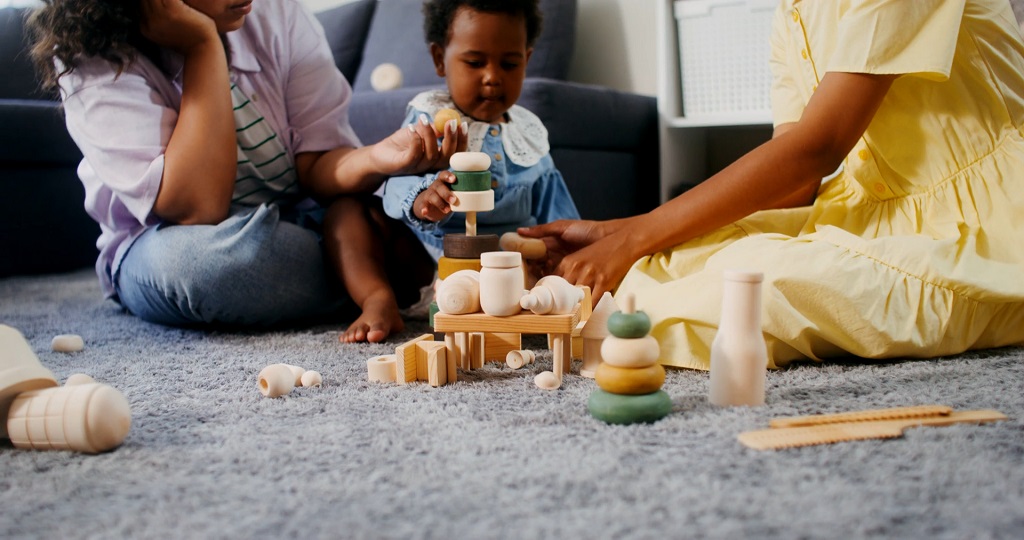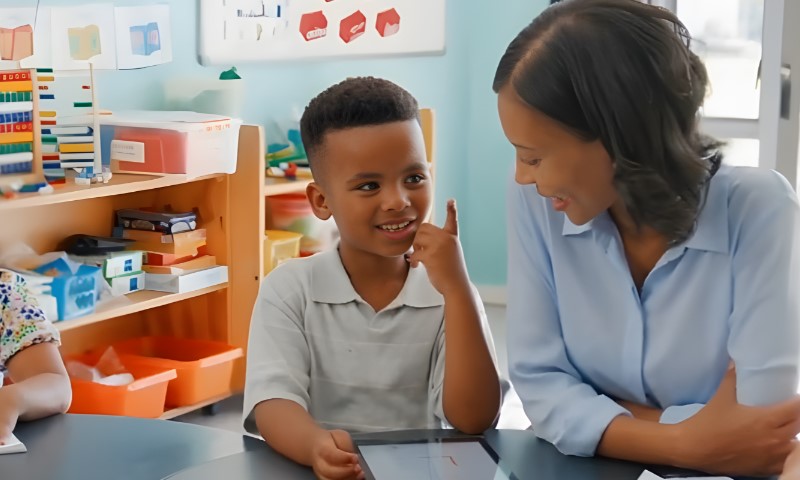
Share Post:
Recognizing a child’s individual strengths during early development sets the tone for how they grow into confident, capable adults. Early identification helps build trust and lays the groundwork for lifelong self-worth.
Parents witness their child’s first steps, first words, and first struggles. That front-row seat to development makes them ideal for spotting emerging strengths. Observation during everyday moments reveals more than formal assessments.
Table of Contents
ToggleTypes of Strengths in Young Children
Children exhibit strengths in different ways, often shaped by their:
- Personalities
- Environments
- Interests
Recognizing these traits early allows caregivers and educators to create supportive and engaging conditions for development.
Strengths appear during ordinary activities like play, conversations, problem-solving, or even moments of frustration.
They don’t always look the same in every child, which is why observation and thoughtful reflection play an important role.
Character Strengths

Character strengths form the moral and emotional backbone of how a child relates to the world.
These strengths influence how they respond to situations, build relationships, and handle change.
Key indicators include:
- Curiosity: Constant questions, desire to learn how things work
- Resilience: Continued effort after setbacks or mistakes
- Empathy: Concern for others, offering help without being prompted
- Independence: Preferring to complete tasks without assistance
- Humor: Making others laugh, easing tension during tough moments
Social and Communication Strengths

Social strengths shape how a child interacts with others, resolves conflicts, and expresses feelings.
Effective communication builds trust, cooperation, and understanding among peers and adults.
Common signs of these strengths include:
- Taking turns without prompting
- Expressing emotions calmly
- Demonstrating patience with others
- Listening attentively and showing interest
- Helping peers in shared activities
Creative Strengths

Creative strengths go far beyond drawing or painting. They reflect the ability to imagine, innovate, and think without boundaries.
Children with these strengths tend to express themselves through many channels.
Look for traits such as:
- Inventing new games with original rules
- Telling elaborate stories with imaginative plots
- Creating art pieces with emotion or symbolic meaning
- Using household objects in unconventional ways during play
- Role-playing or dramatizing during unstructured time
Physical Strengths
Physical strengths often show through a child’s ease with movement, coordination, and energy management.
Children who display these strengths typically feel at home in motion.
Key behaviors might include:
- Climbing structures or navigating obstacles confidently
- Running, jumping, or engaging in continuous movement
- Dancing or mimicking complex motions
- Participating enthusiastically in sports or physical games
- Demonstrating excellent balance and agility
Cognitive & Logical Strengths
Cognitive strengths are revealed in problem-solving, analysis, and abstract reasoning. Children who show logical tendencies often enjoy patterns, puzzles, and planning.
Common examples include:
- Asking “why” repeatedly to probe beneath the surface
- Creating rules or systems for games
- Sorting, classifying, or organizing objects based on patterns
- Understanding cause-effect relationships early
- Building with blocks to achieve symmetrical or structured outcomes
Language & Literacy Strengths

Language and literacy strengths appear in children who show verbal fluency, storytelling skills, or a passion for books. Some children display this through speech, while others prefer written or dramatic forms.
Watch for indicators such as:
- Using a wide vocabulary in everyday speech
- Repeating or retelling stories with accurate detail
- Engaging in pretend dialogue or narration
- Asking meaningful questions during reading sessions
- Rhyming words or playing with language sounds
Math & Reasoning Strengths

Mathematical strengths become evident when children enjoy counting, measuring, and recognizing patterns in their surroundings.
Reasoning skills help them organize their thoughts and make structured decisions.
Notable behaviors may include:
- Sorting objects by size, color, or number
- Counting aloud during everyday activities
- Solving puzzles with clear logic
- Playing with number-based games or apps
- Explaining steps in sequence when solving a problem
Nurturing and Supporting Identified Strengths
When a child shows storytelling skills, join a library reading club or set aside nightly storytime.
Building enthusiasts may enjoy puzzles, STEM kits, or fort-making. Nature lovers might thrive during:
- Walks
- Gardening
- Animal observations
Instead of correcting, focus on what works well. Affirm a child’s efforts and redirect gently without overemphasizing errors.
Modeling thoughtful reflection helps children develop their own habits of growth.
Provide platforms for growth: after-school clubs, summer camps, art stations at home, or open-ended toys can all offer outlets. Offer space and support, but allow children to lead based on their interests.
For parents or educators inspired to support development on a professional level, pursuing advanced roles like Family Nurse Practitioner can be a fulfilling path. A flexible FNP online program can prepare you to deliver evidence-based care while balancing family life.
Observational Techniques for Parents
Recognizing a child’s strengths often starts with careful, consistent observation.
Children don’t always verbalize their talents, but behaviors, preferences, and emotional reactions can serve as strong indicators.
Observing without judgment, comparison, or expectation allows parents to see more clearly what their child naturally gravitates toward and where they shine.
1. Pay Attention During Play

Play is a child’s natural learning environment.
How a child behaves during both solo and group play provides clues about strengths in creativity, leadership, patience, and problem-solving.
Observation tips:
- Watch how they solve problems during building or pretend games
- Look for persistence or adaptability when things don’t go as planned
- Listen to conversations during role play for signs of empathy or imagination
- Notice who initiates the game, follows directions, or modifies the rules
Solo play often reveals focus and innovation, while group play highlights cooperation and emotional awareness.
2. Watch Reactions to New Tasks and Challenges
New activities often trigger growth behaviors. Reactions to unfamiliar or difficult situations can reveal resilience, critical thinking, or independence.
Key observations to make:
- Does the child give up quickly or try multiple solutions?
- Do they ask for help or prefer to work it out alone?
- How do they handle frustration—through emotion, humor, or silence?
- Do they return to the task later without prompting?
Children who re-engage after setbacks often demonstrate intrinsic motivation, while those who ask insightful questions may show developing analytical strength.
3. Observe Communication of Ideas and Feelings
Storytelling, expressing emotions, or sharing ideas gives insight into a child’s thinking process and emotional intelligence.
Some children are naturally articulate, while others communicate powerfully through drawing, acting, or constructing.
Things to note:
- Do they explain ideas clearly and in detail?
- Are metaphors or imaginative language part of their speech?
- Do they comfort others or express frustration clearly and respectfully?
- Is their communication goal-driven, expressive, or inquisitive?
Moments like dinner table discussions or spontaneous storytelling in the car can become a window into inner strengths.
4. Use a Strength Checklist (Bricks4Kidz)
A structured checklist offers a consistent way to track observed strengths over time.
Bricks4Kidz provides a simple format to record repeated behaviors across categories such as creativity, problem-solving, empathy, and verbal fluency.
Tips for using a checklist:
- Observe over 1–2 weeks to allow for variation in mood and energy
- Record moments with specific examples, not just checkmarks
- Review the checklist weekly to spot consistent patterns
- Use it as a reference during parent-teacher discussions or home activity planning
A checklist is most effective when used regularly and alongside open, relaxed interaction.
5. Keep a “Three Strengths a Day” Journal
A short daily reflection can sharpen a parent’s ability to see strengths as they occur.
Writing down three strengths at the end of each day forms a habit of awareness and appreciation.
Reflection suggestions:
- Use short, specific notes like “helped little brother with puzzle” or “asked great question about space”
- Include small moments like initiating clean-up or showing patience in a long line
- Review weekly for recurring themes or emerging talents
- Share entries with the child to reinforce positive identity
Written reflections also serve as reminders during difficult phases and reinforce growth over time.
The Role of Positive Parenting
Children thrive when seen as individuals rather than projections of expectations. Parents who say, “I love how curious you are,” or “You really helped your friend feel better” reflect positive parenting in practice.
Strengths-based parenting respects the child’s nature and builds habits of affirmation. Feedback shifts from vague praise to specific recognition, which encourages repeat behaviors rooted in confidence.
Trust grows when children know they are appreciated for who they are, not who someone hopes they will become.
The Bottom Line
Spotting strengths early builds confidence, trust, and a lasting sense of identity.
When parents look closely and nurture those traits with intention, a child feels valued and understood.
Every child shows brilliance in their way, supporting that light allows it to shine brighter.
Related Posts:











